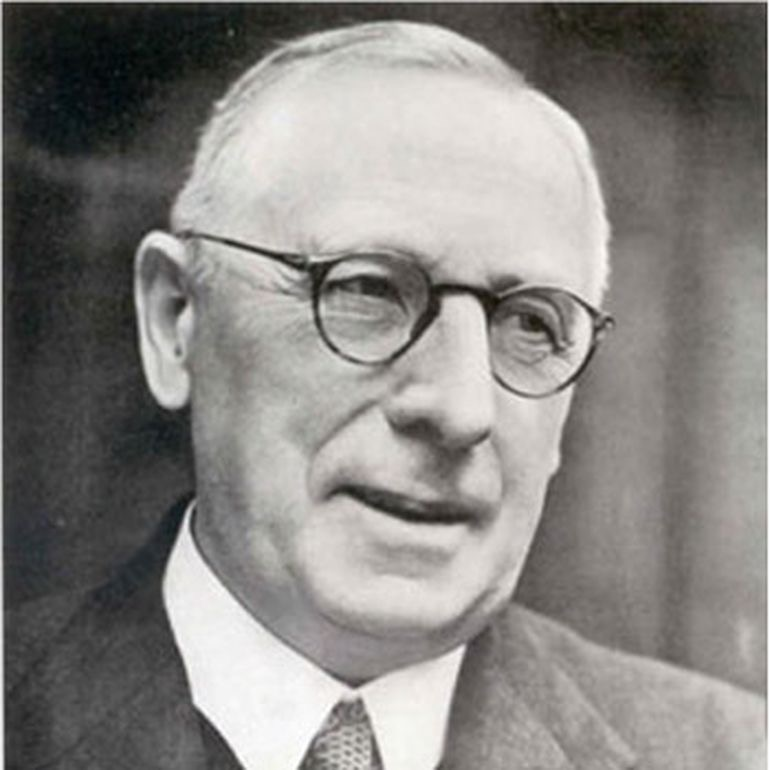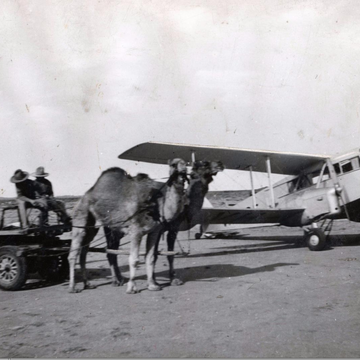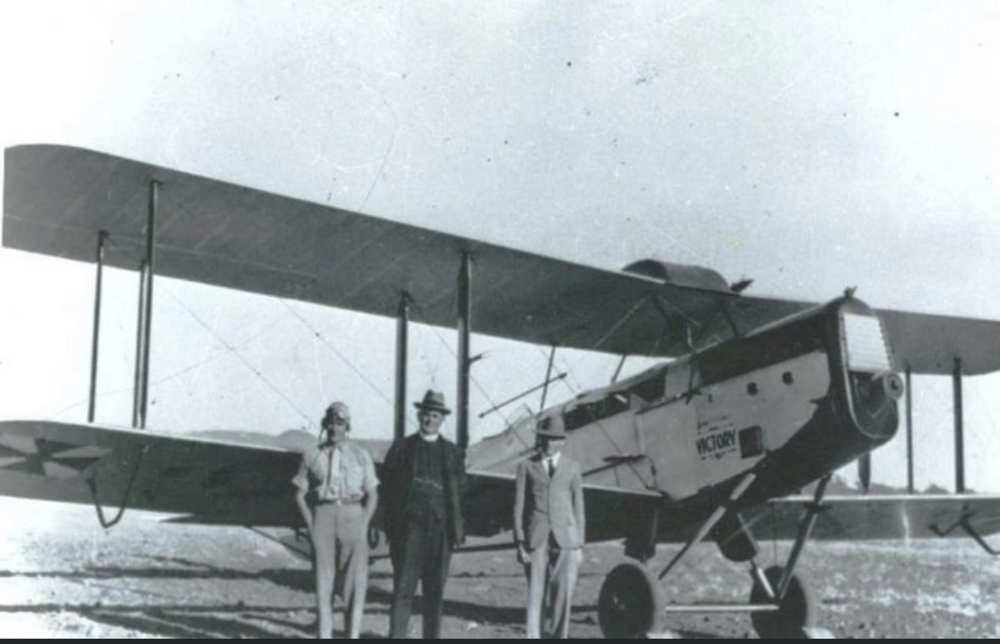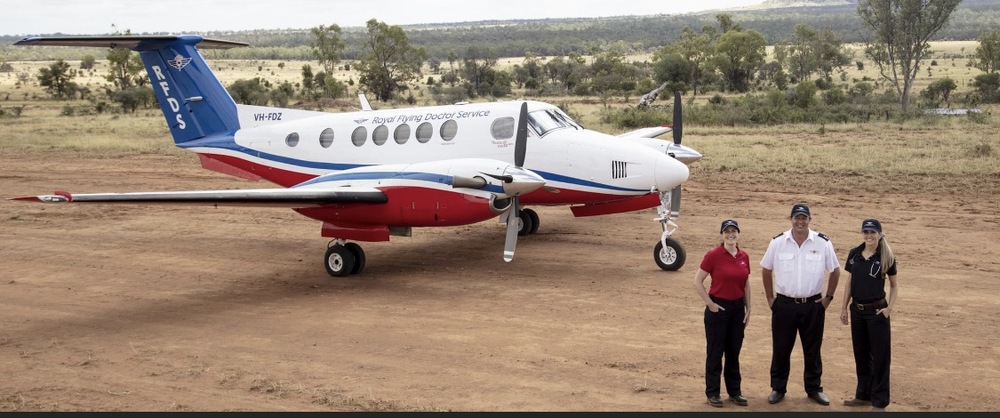The world's oldest aeromedical service turns 95
Angie White
22 May 2023, 3:40 AM
 It is 95 years since Flynn's dream became a reality for residents of inland Australia
It is 95 years since Flynn's dream became a reality for residents of inland AustraliaOn Wednesday 17 May, The Royal Flying Doctor Service celebrated its 95th Anniversary and Flying Doctor Day, commemorating its long-standing commitment to providing essential health care services and emergency aeromedical services to the Australian community.
Thanks to the vision of Reverend John Flynn, the first flight took place on May 17th, 1928, involving Dr. Kenyon St Vincent Welch and Pilot Arthur Affleck who took off in a single-engine De Haviland 50 bi-plane named Victory. This inaugural flight was the start of one of the world’s first aeromedical services.
With only a compass for guidance, the pilots flew the aircraft using landmarks such as river, fences, dirt roads, riverbeds and telegraph lines as ways to find their patients.

Reverend Flynn sought to establish “a mantle of Safety” for those living in remote parts of Australia. His empathy for the lack of medical help for people in outlying areas was the fuel behind his passion.
95 years ago, patients living in places far from cities had to travel hundreds of kilometres by either, horse, cart or camel to reach a doctor. Many of these never made it alive. Reverend Flynn witnessed the struggle of these people daily and wanted more for those living in the bush.
His famous quote “If you start something worthwhile – nothing can stop it” rings true today as evidenced by the success of RFDS and its immeasurable worth to those living outside metropolitan areas.

The visionary John Flynn.
John, a School teacher, then minister, fell in love with the outback after hearing tales from friends of his father, who had ventured there for business deals.
After graduating Melbourne University in 1910 studying theology, he was ordained a Minister in 1911 and soon after made his way to the tiny Smith of Dunesk Mission at Beltana, over 500 kms north of Adelaide, South Australia. Here Flynn saw the battles of outback life and learnt there was no medical care available to inland residents and travellers.
In 1917, Flynn received an inspirational letter from Lieutenant Clifford Peel, a Victorian medical student with a passion for aviation. The young airman and war hero suggested using aviation to bring medical help to the Outback. Shot down in France, he died at just 24 years of age and never knew that his letter became a blueprint for the creation of the Flying Doctor Service.
Over the next ten years, Flynn laid the groundwork for an aerial medical service which finally became a reality when his long-time supporter, H. V. McKay left a bequest for an ‘aerial experiment’ which opened the gate for the Flying Doctor Service to take off.
Finally, in 1928 John Flynn's dream became a reality with the opening of the Australian Inland Mission Aerial Medical Service in Cloncurry, Queensland (later to be renamed the Royal Flying Doctor Service).
In its first year the RFDS flew 50 flights to 26 destinations and treated 225 patients.

Patients were taken to the airstrip by any mode of transport available.
The Victorian section was formed in 1934, WA in 1935 and the NSW Section was formed in 1936. Its Broken Hill base was initially operated jointly by the South Australian and New South Wales Sections and became operational in 1937. Later became known as South Eastern Section.
Although the RFDS began in Queensland, The Queensland Section was not registered in its own right until 1939. The Cloncurry base remained operational until 1964 when it was relocated to Mount Isa. The Tasmanian Section was the last Section to be formed in July 1960, although emergency medical flights were operated in Tasmania long before that, going back to the 1930s.
The Flying Doctor Service finally had everything they needed, only lacking the communication technology to deliver services efficiently.
Alfred Traeger helped to hurdle this barrier with the invention of a pedal-operated generator to power a radio receiver. Now people living in isolation were able to call on the Flying Doctor to assist them in an emergency.
Transistorised receivers later replaced pedal radios, making it possible for doctors to give radio consultations. It also meant neighbours, families and friends, scattered over thousands of kilometres, could exchange news and gossip after normal transmission hours. This time became known as the 'galah' session, aptly named after the noisy, chattering bird.
Using the Flying Doctor Service network, the School of the Air was established in Alice Springs in 1951 with the help of Adelaide Miethke. This radio service provided children living in remote areas all over Australia the opportunity to interact with other children, ask questions of their teacher and supplement their correspondence lessons. A vital service in its own right still today.

Pedal-powered radio transmitter. IMAGE: facebook
As the world’s oldest and most comprehensive aeromedical organisation, Royal Flying Doctor Service (South Eastern Section) CEO Greg Sam said it is with great pride that RFDS is serving more people and communities than ever before with a wider array of health care services.
“The Reverend John Flynn had a vision for the people of the outback and almost 100 years on, his vision continues to be realised,” Mr Sam said.
“It doesn’t matter if you are living, working or just travelling through outback Australia, if you find yourself in a health emergency, we will be there for you.”
“While we began as an emergency retrieval service, today it is about much more. Within the South Eastern Section, we offer GP clinics, extensive mental health and alcohol and other drug services, dental services and reproductive health services.”

IMAGE: RFDS
From bases at Broken Hill and Dubbo the RFDS provides more than 85,000 cases of care in and around NSW every year, as well as performing non-emergency patient transfers, interhospital transfers and contracted aeromedical service delivery.
“There are people who receive all of their healthcare needs from the RFDS. It’s something we’re extremely proud of, and we thank our volunteers, partners and donors for ensuring we can continue to provide such a comprehensive range of services.”
Mr Sam said much has changed in the last 95 years, including the cost of delivery, growing complexity of healthcare needs in our rural and regional areas, and RFDS’s ability to effect real change.
“What has not changed is our dedication to providing high quality healthcare to people who would otherwise have very limited access due to their isolation. We’ve been doing it for 95 years and we look forward to being of service for many more years to come,” Mr Sam said.

Today's aircraft. IMAGE: RFDS
The RFDS employ more than 350 people in and around regional and rural NSW, who help provide over 85,000 occasions of care each year, including:
- 7200 + primary care patient appointments, provided at 830 + clinics
- 3700 + dental patient visits, provided at 660+ dental clinics
- 3400 + face-to-face mental health services and alcohol and other drugs program consultations
- 32,600 + COVID vaccinations administered, across 590 COVID vaccination clinics
- 100 + COVID respiratory clinics delivered.
The RFDS has proudly been named Australia’s most reputable charity 11 times, and still today remains as one of Australia’s most iconic services. All due to the vision of one man and his vision, persistence and dogged determination to succeed and for that Australia has truly benefitted.



